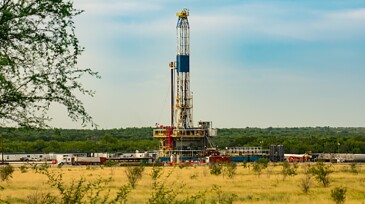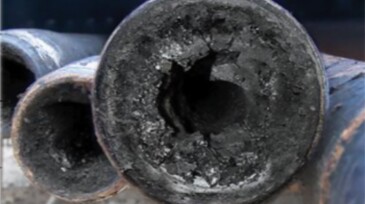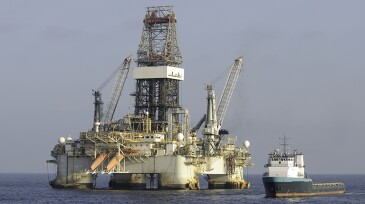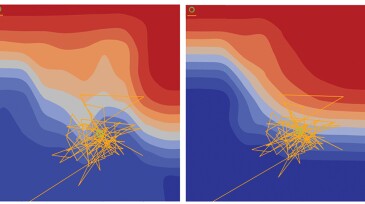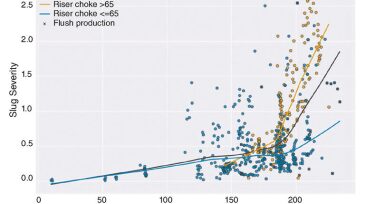Flow assurance
This paper discusses a comprehensive hybrid approach that combines machine learning with a physics-based risk-prediction model to detect and prevent the formation of hydrates in flowlines and separators.
This paper explains that the discovery of specific pressure trends, combined with an unconventional approach for analyzing gas compositional data, enables the detection and prediction of paraffin deposition at pad level and in the gathering system.
This paper presents an approach to subsea hydrate-risk management based on the understanding that some crudes have induction properties that delay hydrate formation even when the pressure and temperature conditions reach the hydrate thermodynamic region.
-
A review of the properties of iron compounds and their impact in shale produced water treatment with an emphasis on their colloidal forms. A wide range of problems is associated with these compounds in produced water including emulsion stabilization, oil-coated solids, pad formation in separators, pipeline solids, and plugging of water disposal formations.
-
The downtime of manufacturing machinery, engines, or industrial equipment can cause an immediate loss of revenue. Reliable prediction of such failures using multivariate sensor data can prevent or minimize the downtime. With the availability of real-time sensor data, machine-learning and deep-learning algorithms can learn the normal behavior of the sensor systems, dis…
-
The authors present a monoethylene-glycol-sensing system and validate it in a specially constructed flow loop.
-
This paper reviews innovations and technologies used to make the Atlanta field in the Santos Basin a successful case of heavy-oil production in ultradeep water.
-
This paper describes strategies for mitigating asphaltene deposition using fiberglass-lined production tubing and the successful trials thereof.
-
This paper describes the key flow-assurance challenges for a deepwater gasfield development in the South China Sea and the considerations and steps taken to achieve an overall flow-assurance-management strategy.
-
Innovative elements of digitalization and automation of workflows provide a new approach for better handling of slugging in subsea developments with long tiebacks, potentially optimizing production and limiting the amount of flaring.
-
The complete paper presents a set of two- and three-phase slug-flow experiments conducted in a 766-m-long, 8-in. pipe at 45-bara pressure.
-
The complete paper discusses the successful application of a data-driven approach to analyze production data and identify root causes of slugging in a subsea production system on the Norwegian Continental Shelf.
-
The recurring long-term mitigation of slugging and various flow-assurance phenomena are challenging issues that demand attention and considerable technical effort. The three papers outlined here discuss slightly different issues and approaches to slug-flow phenomena and flow assurance.




